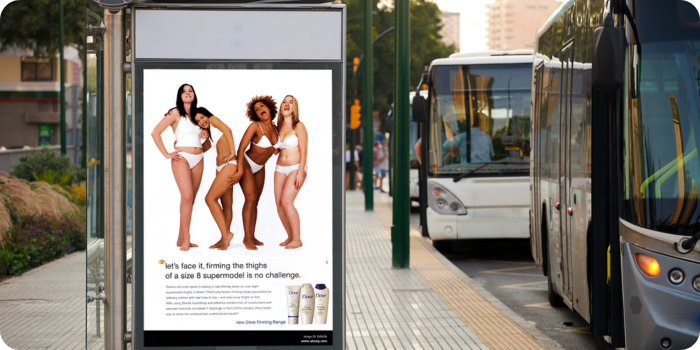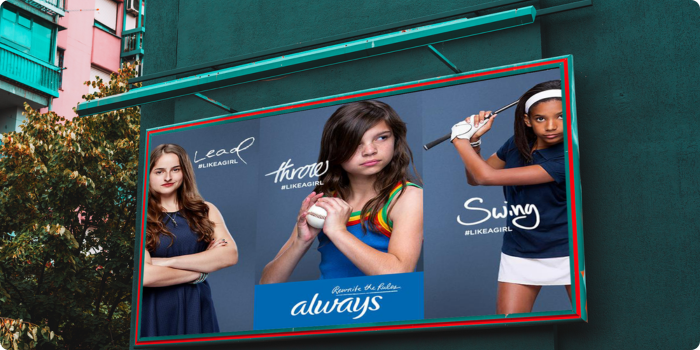Analyzing consumer decision-making has always been essential for CPG brands in crowded, price-sensitive markets.
Rational factors like price, quality, and convenience are still influencing buying behavior, but emotional triggers have been playing a growing and decisive role – think about the last time you impulsively added that bag of chips or fancy scented soap to your cart.
Understanding the emotional drivers behind consumer decisions is key for brands who want to gain visibility, sales volume, and loyalty.
Emotions Come First
Emotions might feel soft, but don't let them fool you: they’re hard drivers of behavior. Whether you’re feeling joy, excitement, pride, fear, FOMO, anxiety, or anything in between, it’ll impact your decision-making. (It happens to the best of us – including the marketers who know better.)
We don't just buy with our heads or wallets – we buy with our hearts. Take nostalgia: a shopper might reach for a specific snack because it reminds them of their childhood, not because it's the best value or most delicious flavor combination. That emotional shortcut and serotonin boost can override logic in a heartbeat.
But when brands develop campaigns with a solid understanding of emotional responses, they can connect on a deeper level to build brand affinity and incentivize sales.
The research says it all: Emotions contribute to roughly 90% of our decisions, leaving only 10% to rational thought. For CPG brands battling for attention in the seconds when shoppers make decisions, that stat matters.
We operate on two systems when making decisions:
- System 1: Fast, emotional, intuitive
- System 2: Slow, logical, deliberate
Most in-store decisions are made via System 1. This means emotional cues – like a reward that feels “worth it” or a brand story that resonates – nudge purchases more effectively than price alone.
Emotions also influence how we process information. A consumer feeling anxious might focus on risk or negative features, while someone feeling happy could overlook flaws. For marketers, this interplay is critical when crafting campaign tone, messaging, and reward mechanics.
The right emotional triggers, deployed at the right time, dramatically impact everything from basket size to brand loyalty:
- Nostalgia: Shoppers reach for brands that remind them of home or childhood.
- Joy: Products that bring delight or shared experiences make shoppers more likely to choose your brand.
- Pride or Aspiration: Shoppers gravitate toward brands that reflect personal values or achievements.
Whatever the emotion, one thing is true: they create decision-making shortcuts that bypass logic and drive action.
Surprise-and-delight mechanics, purpose-led storytelling, and limited-time offers are more than tactics; they’re proven conversion tools. The positive emotional triggers associated with the first two will increase campaign results. And if negative triggers like FOMO or urgency are used with care to avoid losing trust, they can meaningfully boost sales.
Why? When consumers feel something, they do something. Marketers must go beyond message and format: they need to ethically engineer emotional responses.
Emotions often take the lead, but rationality still plays a key role – often post-purchase.
A shopper might pick a pricier dishwasher detergent because they “trust the brand.” Product performance or eco-credentials justify the purchase later, but that inclination to trust is emotional.
For challenger brands and private labels, emotional resonance is non-negotiable. Without it, brands become interchangeable in consumers’ eyes.
When price is the only differentiator, it's a race to the bottom. But when you build a relationship between a person and a quality product? That’s the secret sauce to keeping shoppers engaged.
Shopping is often a source of excitement and joy, and these positive emotions impact spending, brand recall, and long-term loyalty.
CPG brands tapping into these emotions can enhance the customer experience while driving both trial and repeat purchasing. Three of our favorite ways to do this? Leaning into brand storytelling, sensory elements, and reward programs.
Creating a campaign that elicits delight doesn’t need to be complex – it just needs to feel personal and rewarding. And that’s something that a price cut rarely achieves.

Dove’s “Real Beauty” campaign challenged traditional beauty stereotypes and celebrated authenticity. Dove built trust with consumers by fostering inclusion, championing self-esteem, and featuring real women with real stories – a powerful example of emotion as a business driver.
This is where emotional bonds become brand assets. When a consumer feels seen, understood, or uplifted by a brand, the associated positive emotions go way beyond the first purchase: they build affinity that leads to buying again.
And loyalty rooted in emotion is hard to break. Competitors might be able to match your price or mimic your packaging, but they can never replicate how your brand makes someone feel.
Positive emotions have the power to fuel loyalty – on the flip side, negative emotions can damage it.
If feelings like sadness or anxiety are associated with your brand, the side effects include avoidance and long-term aversion. These associations can have multiple roots, including poor customer experience or overly transactional campaigns.
Take deep discounting. It can drive short-term volume, but it also conditions consumers to expect deals. By cultivating deal-hunting behaviour, loyalty becomes tied to price – not product or purpose. Emotional cues get lost, the customer relationship becomes purely transactional, and the brand loses its value over time.
To protect brand equity, marketers need to consider how every promotional mechanic makes the shopper feel. Does it build trust? Create a sense of reward? Or does it signal that the brand's worth is negotiable? Every aspect of a campaign needs to be geared towards building emotional currency that compounds over time.
According to Nielsen, ads with emotional content perform nearly twice as well as those with rational messaging alone.
In a sector where shelf space is competitive, brand loyalty is waning, and product parity is high, leading with emotion can be a crucial differentiator.

Always demonstrated the transformative potential of emotion-led advertising with their #LikeAGirl campaign. By challenging stereotypes and turning the phrase “like a girl” into a message of pride and empowerment, Always created a global conversation that transcended the product itself and repositioned the brand.
Emotion-led advertising connects the dots between human insight and commercial performance. When brands understand the emotional triggers of their target market, they can tailor their messages to resonate with consumers on a deeply personal level.
This approach goes beyond awareness to build stronger relationships, where a brand earn its place in customers’ hearts not through price, but through resonance, relevance, and reward.
We all love a good story. Emotional storytelling is a powerful tool that can:
- Humanize brands.
- Convey purpose.
- Connect with values and aspirations.
- Turn everyday purchases into more meaningful connections.
Through authentic and relatable narratives, brands can build empathy and trust with their customers: two critical drivers of long-term brand preference.

Coca-Cola’s global “Share a Coke” campaign transformed its iconic logo into people’s names, prompting customers to search for their own and share bottles with friends and family. This simple act turned a beverage purchase into a moment of joy, nostalgia, and real-world connection – capturing how personal, shareable experiences elevate brand loyalty and turn products into rituals.
Good storytelling is a commercial asset. It differentiates brands in cluttered categories, reinforces identity, and gives consumers a reason to return beyond price or promotion. With narratives that reflect their audience's values, routines, and aspirations, CPG brands can transcend their functional role and become part of a consumer’s life story.
Emotional marketing is naturally sticky – look at the number of brands using nostalgia over the last five years.
Our emotions play a significant part in how we perceive, evaluate, and ultimately choose between different options. By understanding and harnessing that power, brands can create compelling promotional strategies that resonate with consumers on a more meaningful level. At the same time, they can avoid destructive cycles of discounting and focus on cultivating genuine brand loyalty that’s felt across generations.
Where Promotion Meets Emotion
TLC helps CPG brands harness the emotional triggers that matter through scalable, experience-led programs that drive action (without sacrificing margin). Whether you’re looking to earn secondary space, boost NPD trial, or stand out from private label competition, our promotions are designed to deliver immediate impact and lasting brand value.
From leisure incentives to family-led rewards, every campaign is built to create a genuine emotional connection between product and person. When that exists, people notice, respond, and remember.
Want to see how our campaigns are helping brands like Reckitt, Diageo, Ferrero, and Mars build equity, sales, and loyalty without discounting?
